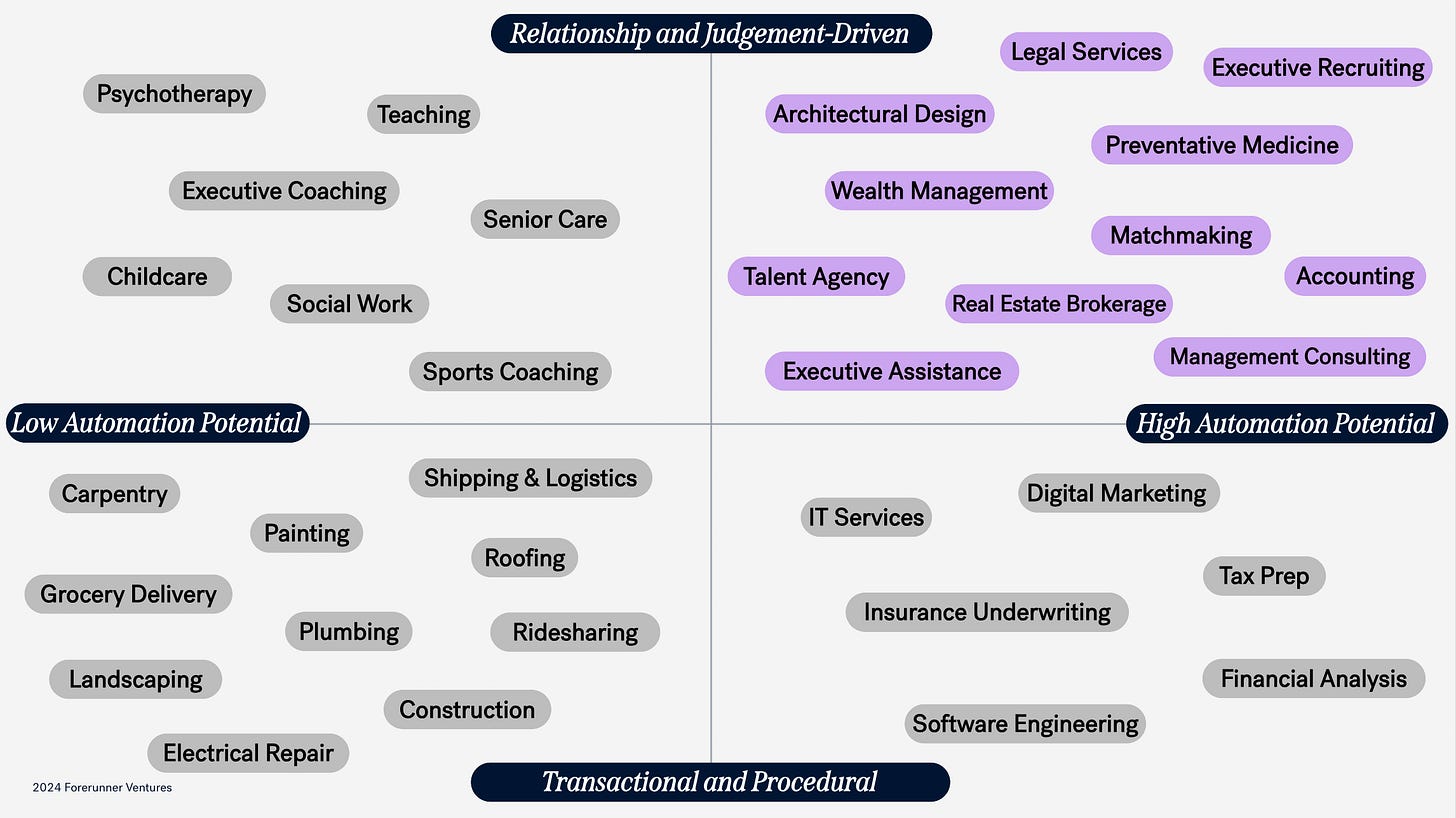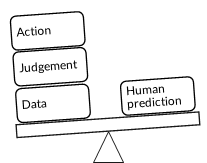AI economics 2.0
A few years ago, I wrote a post about the economics of AI depicted through a value Seesaw seen below (the post was for a company that was eventually acquired by Applied Intuition, a pioneer in applying AI in the automotive industry).
It’s incredible to see how AI adoption has increased and changed perceptions of its impact in the near future but I believe that the fundamental value drivers remain the same. The economics of AI continue to revolve around the concept of prediction as a key input in many business activities and our daily lives. As AI technology advances, it's causing a significant drop in the cost of prediction, which in turn is reshaping various industries and creating new opportunities.
Three main AI complements that are becoming increasingly valuable are:
Data
Judgment
Action
As AI improves its predictive capabilities, the value of human prediction decreases, while the importance of data, human judgment, and human action increases. The above graph from the folks at Forerunner shows where the value of such human judgment will increase whereas the processes of applying human knowledge can be automated. This shift is particularly evident in knowledge-based industries such as legal, financial, and healthcare services.
The "Selling the Work" Model
Initially, many AI companies focused on "selling the work" - providing AI-generated outputs to service providers, think labelling and annotation of images which is essentially replacing human perception to automated legal document review which is replacing human information processing.
However, this model faces challenges as AI technology becomes more accessible and commoditized. As a result, the arbitrage opportunity that currently exists between AI-generated work and human labor is likely to collapse. The most successful AI-powered services firms will be those that prioritize the human element alongside AI capabilities, the good old augmented intelligence rather than artificial one. You’d need fewer people to do the the task but it will still require human touch.
These firms recognize that while AI can handle a significant portion of knowledge work, many industries still require human judgment, trust, and credentialed individuals to deliver services effectively. To assess AI-readiness and how it can affect a certain organizational process, think about various factors, including:
The intended use of AI in the business
The nature of the business
Organizational workflows and tasks
Potential return on investment
For businesses scoring high on AI-readiness, the next step involves breaking down workflows into tasks and identifying those with significant prediction components that could benefit from AI implementation. If the budget assigned to prediction can be substantially reduced using AI, then the company is 100% ready. It then becomes a buy vs. build decision. Since the speed of development in AI is blazingly fast the answer to that question is buy in almost all cases.
The Future of AI-Powered Services
As AI technology continues to advance, we can expect to see more AI-native services firms emerging. These firms will likely:
Prioritize AI implementation at every stage
Organize expert employees to focus on work that AI can't replace
Align business model incentives more productively
Establish cultures that are risk-tolerant and aspirational
The most successful AI-powered services firms will not just sell AI tools to existing companies but will become the next generation of industry leaders in their respective fields. Perhaps we will see the first billion-dollar solo-entrepreneur building such a business.
This is an educational post about GEX Ventures investments. It is for informational purposes only and may not be relied on as legal, tax, securities or investment advice and does not constitute an offer to buy or sell interest in any products offered by us or others. Email me at mk@gex.vc or leave a comment if you’d like to exchange ideas.



